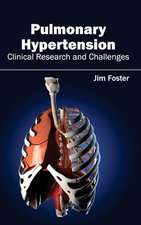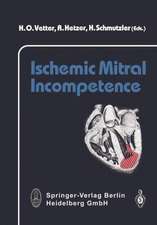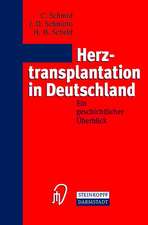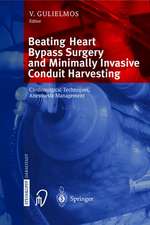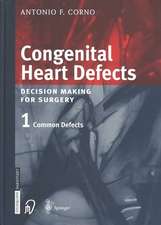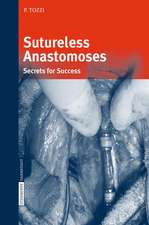Blood Use in Cardiac Surgery
Editat de N. Friedel, R. Hetzer, D. Roystonen Limba Engleză Paperback – 3 oct 2013
Preț: 371.30 lei
Preț vechi: 390.84 lei
-5% Nou
Puncte Express: 557
Preț estimativ în valută:
71.06€ • 76.71$ • 59.59£
71.06€ • 76.71$ • 59.59£
Carte tipărită la comandă
Livrare economică 19 aprilie-03 mai
Preluare comenzi: 021 569.72.76
Specificații
ISBN-13: 9783662061213
ISBN-10: 366206121X
Pagini: 300
Ilustrații: X, 286 p. 72 illus.
Dimensiuni: 170 x 244 x 20 mm
Greutate: 0.48 kg
Ediția:Softcover reprint of the original 1st ed. 1991
Editura: Steinkopff
Colecția Steinkopff
Locul publicării:Heidelberg, Germany
ISBN-10: 366206121X
Pagini: 300
Ilustrații: X, 286 p. 72 illus.
Dimensiuni: 170 x 244 x 20 mm
Greutate: 0.48 kg
Ediția:Softcover reprint of the original 1st ed. 1991
Editura: Steinkopff
Colecția Steinkopff
Locul publicării:Heidelberg, Germany
Public țintă
Professional/practitionerCuprins
I. Pathomechanism of Defective Hemostasis During and After Extracorporeal Circulation.- Fibrinolysis.- Pathomechanisms of Defective Hemostasis During and After Extracorporeal Circulation: Contact Phase Activation.- Pathomechanism of Defective Hemostasis During and After Extracorporeal Circulation: The Role of Platelets.- Blood-Surface Interaction During Cardiopulmonary Bypass.- A Clinical Study on Platelet Preservation in Coronary Artery Bypass Surgery During Cardiopulmonary Bypass without Oxygenator.- The Effect of Aprotinin on Platelet Function and Coagulation In Vitro.- Clinical Impact of Reduced Blood Cell Deformability During Cardiopulmonary Bypass.- Diagnostic Value of Hemostatic Parameters for Prediction of Complications in Patients Undergoing Aorto-Coronary Bypass Grafting.- Summary of Lectures, Posters and Discussion: Pathomechanism.- II. Epidemiology — The Size of the Clinical Problem.- Homologous Blood Use in Cardiac Surgery.- Blood Use in Cardiac Surgery — A Transfusionist’s Viewpoint.- Current Risks of Blood Transfusion.- Blood Use in Adult Cardiac Surgery — Extrapolations from the Carola data base.- Evolution of Requirements to Replace Blood and Plasma in Cardiac Surgery.- AIDS and Surgery: On the Need to Reduce the Risks of HIV Infection.- Epidemiology — Screening for Infectious Diseases Transmitted Through Blood and Blood Products.- III: Non-Pharmacological Methods for the Reduction of Blood Use in Cardiac Surgery.- Autologous Blood Predonation.- Resuscitation Fluids for the Treatment of Hemorrhagic Shock in Dogs: The Effects on Myocardial Blood Flow.- Reduction of Blood Use in Cardiac Surgery by Topical Hemostasis Using Fibrin Sealant.- Retransfusion of Postoperative Drainage Blood.- Bacteriological Methods to Monitor the Quality ofIntraoperative Autotransfusion.- Blood Salvage in Cardiac Surgery: Comparative Analysis of Three Procedures.- Inflammatory Response Due to Cell-Saver in Cardiac Surgery.- Open-Heart Surgery in Jehovahs Witnesses.- Autologous Blood Transfusion in Cardiac Surgery — 15-Year Experience.- Preoperative Autologous Blood Donation to Minimize Homologous Blood Transfusions.- Use of Predonated Autologous Blood in Cardiac Surgery.- Blood Use Reduction by Predonation — How Effective is It?.- Autologous Blood Transfusion in Cardiac Surgery.- Intraoperative Blood Conservation Using Cell-Saver.- Intraoperative Autotransfusion.- Cardiac Surgery in Jehovah’s Witnesses: An Experience of 62 Cases.- Reduction of Homologous Blood Requirement During Myocardial Revascularization — Comparison of Four Different Techniques.- IV. Pharmacological Methods for the Reduction of Blood Use in Cardiac Surgery.- Platelet Dysfunction after Coronary Artery Bypass Surgery.- Clinical Effectiveness of Aprotinin in Heart Surgery.- Safety and Risk/Benefit Assessment of Aprotinin in Primary CABG.- Investigation on the Mechanisms of Action of Aprotinin in Cardiac Surgery.- High-dose Aprotinin Reduces Bleeding in Patients Taking Aspirin at the Time of Aorto-Coronary Bypass Surgery.- Preserved Hemostasis During the Combined Use of Aprotinin and Aspirin in CABG Operations.- ACT and Aprotinin.- Aprotinin: Effect on “Re-Do” Surgery.- The Edinburgh Experience — Low-dose Trasylol.- Reduction of Blood Use by Aprotinin After Heart-Transplantation.- Blood Damage and Activation in Cardiopulmonary Bypass.- V. Panel Discussion.- Changing Concepts of Blood Use in Cardiac Surgery.







